The design challenge is to maximize the square footage within a typical 20’x45′ townhouse footprint while minimizing the lost space in public areas. Sounds simple? Haha, yeah sure. To do so one needs to examine all the pieces to ensure they themselves are efficient, and then arrange those pieces in such a way to avoid wasted space and improve sizes of rooms based on their hierarchical importance.
So we want to minimize the public spaces, the hallways and push that area savings into the main rooms of the apartment. At the same time we want to maximize the number of bedrooms, keep all plumbing and vent stacks in one area to minimize cost of construction, and keep everything nice and easy to build with simply arranged partitions, so the cost stays reasonable, and the time it takes to finish is quick. Clean layouts means less confusion for contractors, thus avoiding mistakes.
Can we at SimpleTwig Architecture.llc do it? We think we have and would like to present a clean, highly efficient apartment layout ready for most townhouses in New York City, Chicago and other urban areas, allowing the Home Owner to maximize their rent roll while providing their tenants with homes they will look forward to living in.
Townhouse Version 8
GOAL 1: The goal of this scheme is, by changing the shape of the stairs (which may not fit between the bearing and party-wall of existing houses), to thus increase the size of the Great Room making furniture placement more flexible. Doing so by eliminating built-in shelving.
GOAL 2: To simplify the partitions while maintaining large functional spaces.
GOAL 3: To ensure that Plumbing and Vent chase is in one spot, and is large enough to accommodate 4 hood vents, 4 dryer vents, 4 bathroom vents and a soil stack.
GOAL 4: To keep all plumbing near the stack for easy connections without the need for soffits.
GOAL 5: Through the above goals, to minimize the cost of construction while increasing the amount of usable square footage within the apartment(s).
Background: If you haven’t been following our recent articles, we are examining the traditional townhouse, a building type that we have decades of experience with in renovation design. Often our clients have a hard time understanding the practical aspects of layout efficiency, that is, to leverage the available square footage of a building footprint into larger and nicer apartments. All too often they are willing to do as little as possible ‘to add a bathroom’ or a closet, without understanding that the decades of conversions have left their structure nearly dysfunctional.
Through decades of on-site home inspections, I see a bathrooms that open onto a kitchens, next to a living room that has no windows (illegal), or in one case the bathtub was actually in the kitchen. One of the bedrooms is only accessible through another bedroom, if one can even call it a bedroom. It’s that tiny little left over space between the stair and the front of the building that only new parents can relate to as their baby’s nursery. Most tenants accept the reality that railroad apartments means it is a one bedroom, and that results in a significant loss of income for the landlord.
While a one bedroom might capture $2000/month in rent, if in the right neighborhood, a two bedroom with the same footprint would capture an additional $800/month. That equals an extra $384,000 for 4 apartments over a 10 year period, lost because the landlord was afraid to make the conversion. Of course the $2000 per month is also in jeopardy if the one bedroom isn’t renovated. Adding the washer dryer in a new two bedroom apartment means maximum rent, that only increases over time. The advantage is obvious, the extra bedroom itself paying for most of the renovation, and with a monthly rent roll of $11,200 for 4 apartments one can easily meet the refinanced mortgage to fund the project. The question from a financial point of view is, what are people waiting for?
The 45′ long x 20′ wide townhouse is the most common townhouse building type in New York City and elsewhere, which is the prototype we are using for this study. When originally built, indoor plumbing was only a dream. Through previous articles we at SimpleTwig have shown that two bedroom apartments are possible, and as such provide the much needed income to help maintain the building and provide the funding to family with children on the way to college, or parents seeking retirement without worry.
In certain neighborhoods, a full gut to realize the full potential of the building footprint is warranted. These are townhouses that need renovating, are in or very near to great well established neighborhoods, and who’s value has risen dramatically thus providing the funding through mortgage refinancing for a full gut renovation. For instance, a recent client has paid for their $9500 townhouse in full, yes when they bought it the price was $9500.00. They own it completely and are underutilizing its 4 floors and 4 apartments, some being empty. The same townhouse is worth $2,000,000.00 today. A gut renovation to implement ‘Layout 8’ for instance, would run about $600,000. At $2700/month/apartment x 3 apartments (leaving out the Owner-occupied apartment from the rent roll) = $8100/month conservatively. Times 12 months and the owner is now banking $97,200 per year. This means in just over 6 years the rental income from three apartments has paid for the renovation, all the while the Home Owner is living there for free. Another 6 years and their savings account is over $600,000 richer. That’s a lot of cash and why people shouldn’t wait if the conditions are ripe for renovation.
In New York City, the conditions are ripe. There’s a shortage of quality housing, especially 2 bedrooms with laundry and a wonderful large living space. Bedrooms in New York City are secondary in terms of priority, as it’s a place to crash, and thus can be on the small side. Us New Yorkers are all about living and having a large Great Room as shown in ‘Layout 8’ makes living here worth every moment.
There are also certain neighborhoods that are growing. One only needs to look for new buildings going up. If you’re near a couple or a few nice looking new buildings, then you’re in a good location to renovate. The other factors regarding location include the neighborhood itself. Is it relatively safe? Near good transportation or public parks? Near or in a fantastic well established neighborhood? If yes then your house is in a desirable area where people want to live, translating into ‘you will find tenants’ if you offer reasonable rates.
Layout Version 8:
GREAT ROOM, KITCHEN, DINING
The layout submitted, number 8, has a really nice Great Room, where furniture could be moved into a variety of layouts, the kitchen is an ample standard size with a peninsula, and there are a few places one can place the dining table. The bathroom is ample with its own linen and toiletries closet, and there’s a large laundry room that can also hold cleaning supplies and equipment.
With dimensions of 18′-3″ x 19′-2″, it really is a Great Room…
MASTER BEDROOM
The Master Bedroom is easy for circulation and has a highly desired walk-in closet. While modest in size, it does what New Yorkers need, provide a quiet place (on the back side of the property) to sleep. And check out that coat closet, tell me that isn’t missing from most townhouses in New York City?
STAIRS
The stair in this configuration allows there to be daylight from above which the other schemes did not achieve, and despite its 69 square foot footprint, including the hole in the middle, it manages to have the smallest footprint of all the stair layouts, allowing that extra space to be utilized back into the apartment. There’s even a slight enlargement of the landing at the apartment door, to provide the tenant with just a little bit of extra space without altering the code compliance of the stair itself.
Keeping the stair as small as possible means the landlord has less to maintain. Less lighting, less paint, less everything.
It’s ironic that adding an opening in the middle to allow light to steam downward from the skylight actually helped to arrange the steps so that the overall footprint is smaller than straight-run or switch-back stairs. That this layout is the smallest footprint, even with the extra landing space provided for the apartment door.
Comparison to other type of stairs:
- Traditional Straight-run Townhouse Stair, with landings and hallway: 110 SF or put another way, a loss of 41 SF.
- Switch-back stairs, 2 landings only with landing extension: 82 SF, or put another way, a loss of 13 SF.
- The above ‘square’ stair takes up the space of just 69 SF, and has extra space provided at the apartment door, allows light from a skylight to filter down, therefore also offering fresh air ventilation. Clearly if one is going to replace their stair and wants to maximize rental income, this is the configuration to use. As noted before, the smaller size means it takes fewer lights to illuminate it, less paint to maintain the walls, less floor to sweep and mop, all helping to make the buildings a well maintained place to live by reducing the burden on the landlord.
CONCLUSION
Overall, this design offers a clean layout where all the partitions are orthogonal and ‘in the middle’, a hallway ‘spine’ that connects all the functions that is also smaller than other schemes, and an ease of circulation flow that would make any tenant happy.
BREAKDOWN OF FEATURES
PROS
- Great Room, much larger than previous layouts, at 353 SF this really is a Great Room, offering a tenant multiple ways to arrange furniture; 18′-3 1/2″ x 19′-2 1/2″. Ample room for Living, Dining and Kitchen. With 3 large windows overlooking the street, there is plenty of daylight and ventilation, and a connection with city life.
- Bedrooms are clean rectangles. Master Bedroom is slightly larger to accommodate a queen-sized bed, and has a walk-in closet.
- Stairs, with its smaller footprint of just 69 square feet, it now has a skylight and ventilation, a significant bonus to keeping the public space fresh. Its smaller size means smaller heating and lighting bills, and, less paint and cleaning maintenance because there is simply a smaller surface area.
- Laundry is part of bathroom, to take advantage of vertical shafts for ventilation and plumbing, and, to use the bathroom vent to keep the laundry room smelling fresh. The size of the units is compact to allow a wider hallway, and a recess for the refrigerator. The washer/dryer are side by side units to allow for a countertop to help with folding or hold laundry. Closing the bathroom door during use will help keep the noise down during laundry times in the rest of the apartment. Above the countertop are upper cabinets provide toiletry storage, shelf for towels, and a rod for hanging shirts to help minimize wrinkling, as well as for other cleaning supplies.
- The back wall of the laundry room is 2×6 stud wall, offering plenty of room to keep the dryer duct within the wall, up to a soffit and over to the chase (the soffit being used for the stove hood vent as well), allowing the machines to rest against the back wall. Further there is a recess above the washing machine to allow for pipe connections and shut-off valves, further helping to keep the machines in the smallest space possible to maximize their size.
- Coat Closet is much larger than previous versions, which is handy to keep those bulky coats, boots and other seasonal items and away from personal cloths closets.
- Kitchen is now a standard size, rather than a compact kitchen, with a recessed refrigerator and upper cabinets. The island remains simple and open to the space beyond. The gas range now has a hood vent to the outdoors. There is plenty of convenient countertop space adjacent to each major fixture. The layout is an efficient triangle.
- Bathroom is spacious, featuring a bathtub/shower that has a shampoo shelf/seat. Overall this layout offers a larger bathrooms than previous layouts. The shower controls are easy to reach and avoid the typical ‘reach around the toilet’ issue most layouts have.
- Vertical Chase: The large pipe and vent chase will accommodate dryer ducts, bathroom vent ducts, and, stove ducts which will help to keep those cooking smells inside the building to a minimum. It is situated in an ideal location, also providing room for hot and cold water pipes, plumbing waste and vent stacks, and condenser lines for heating and air-conditioning. This means there is only one stack for all apartments, helping lower construction costs and putting all fire-blocking for floor penetrations in one location, making passing inspections easier. Access to the chase is done through a panel behind the refrigerator, a feature not available in almost all projects, allowing the servicing or replacement of items as the decades go by.
ADDITIONAL
- Meters: All apartments have their own electric and gas meters.
- Landlord pays for water and has their own electric meter for public shared spaces.
- Outdoor Space: This house should have a roof terrace, if 4 stories or more, accessible to all tenants. The lower two floors should have access to the backyard (shared), the 2nd floor through the use of a terrace, the lower floor access to the grade and entire backyard.
- Skylights: The top floor apartment should have a skylight in the bathroom and one in the hallway if possible.
- Mechanical: Each unit has their own heating and cooling unit, along with their own thermostat, to let them manage their own comfort. The condensers are located on the roof.
- Insulation: Exterior walls have maximum expandable spray-foam insulation, R-19 in walls, R-36 in roof structure.
- Windows: High-efficiency windows that also help block out noise.
- Apartment Doors: 2-hour rated apartment doors with 3 point locking system.
- Instant Hot-water system within the units eliminates the need to run hot water pipes from the cellar.
CONS
- There are none. At this point it’s all about the details, materials, the nitty-gritty of positioning of every component to ensure everything is simple and perfect.
This study has demonstrated that using the correct stair configuration can save a significant amount of square footage that can be utilized within the apartment space, thus minimizing the public spaces, their lighting and heating requirements and in general giving tenants better apartments.
NOTE 1: Coat Closet: To make this apartment slightly cheaper to build, one could remove the Coat Closet and thus delete the door and trim, putting the area back into the Master Bedroom Walk-in Closet.
NOTE 2: Laundry: Because installing a Laundry Room is so cheap, compared to the extra income it generates, it is worth keeping. In general, charging just $35 extra a month pays for the laundry in a couple of years, allowing the landlord to continue to collect the extra in the following years. Automatic shut-off valves, drain, and metal hoses all ensure no water damage.
NOTE 3: Flexibility: This layout is within a 20’x45′ building, thus representing the vast majority of regular townhouses. Those which are larger will only benefit in larger bedrooms (window sizes allowing) and a larger Great Room. If the existing is a 60′ townhouse, then separate laundry room, larger walk-in closets and larger main rooms would be doable. We have also shown that within a 50′ building an extra room (study, den, crafts room or home office) can be achieved.
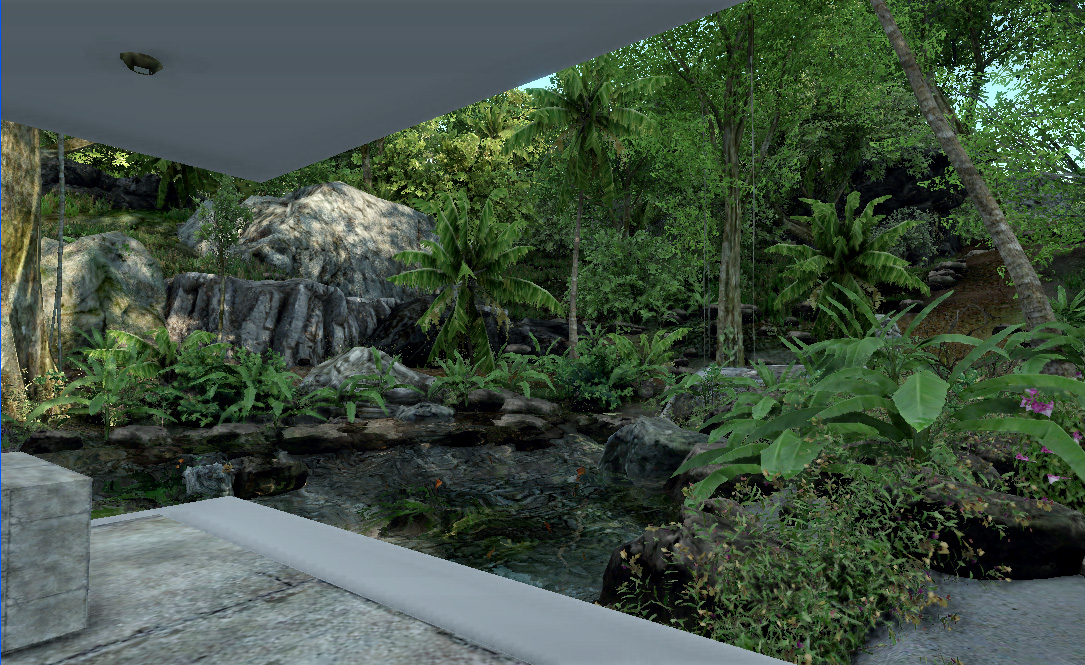
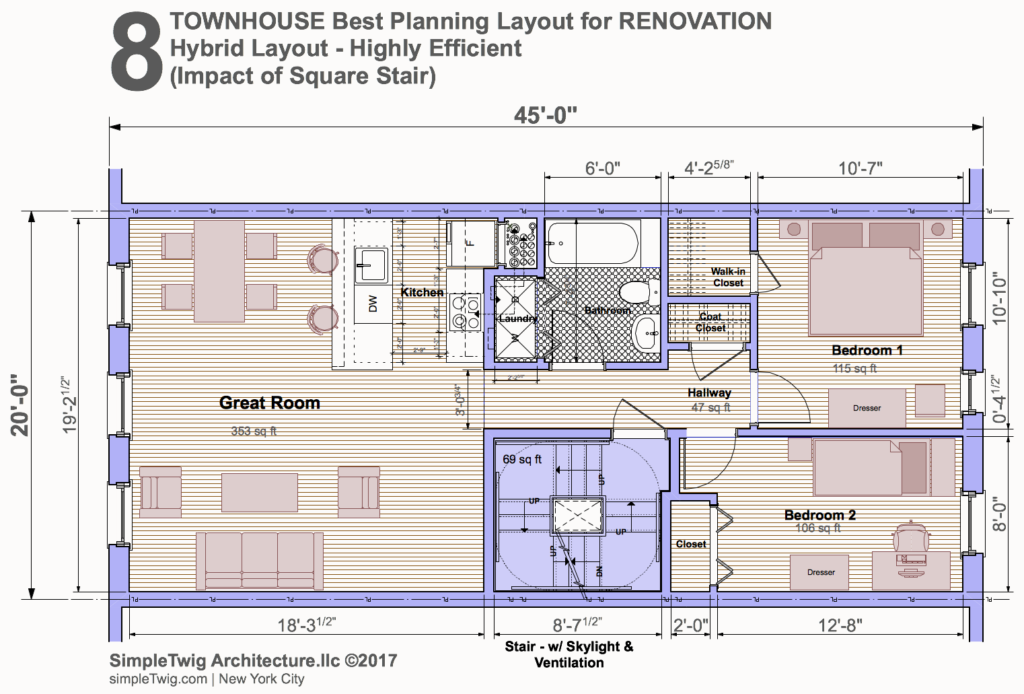
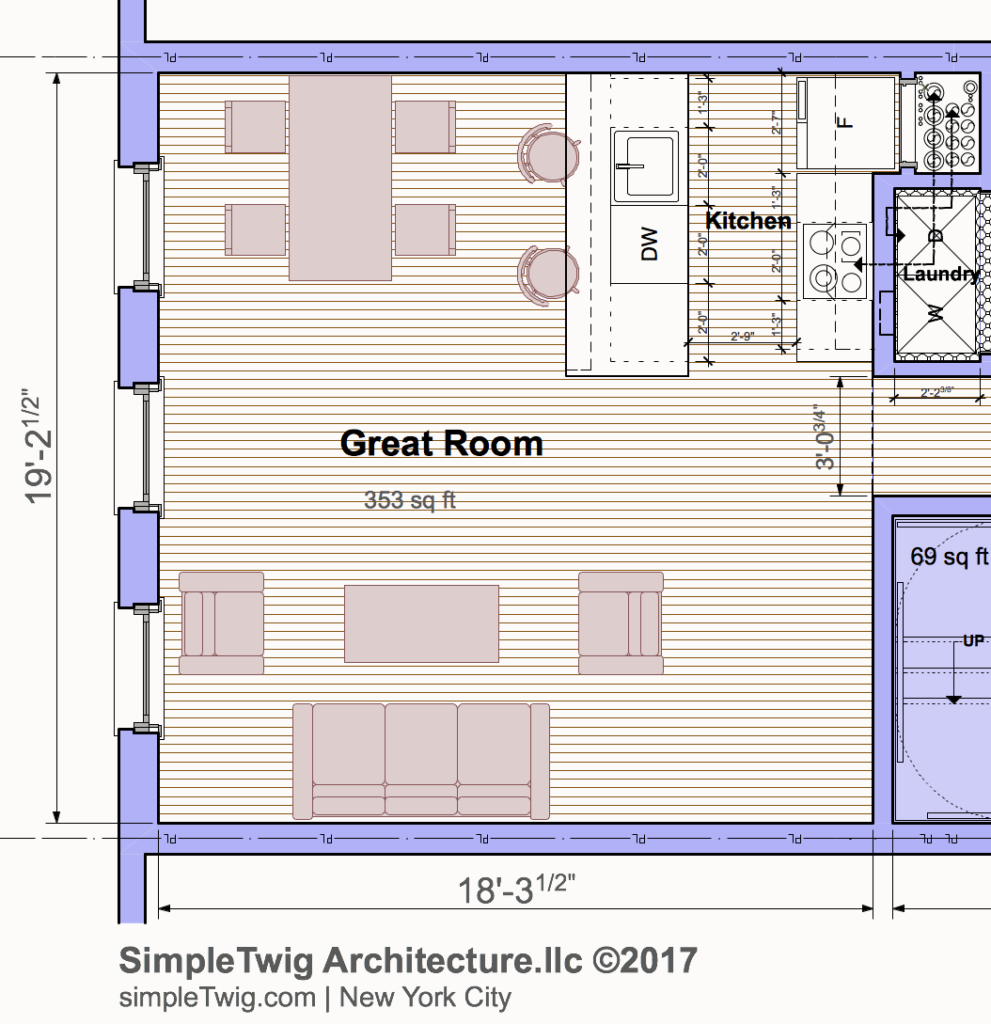
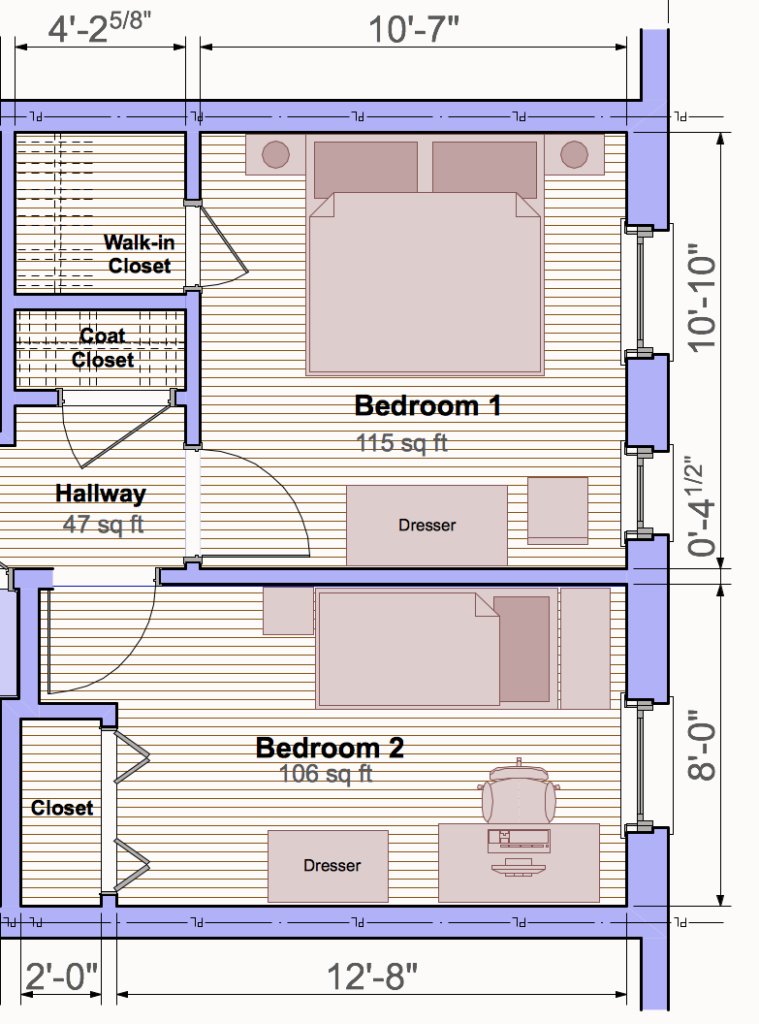
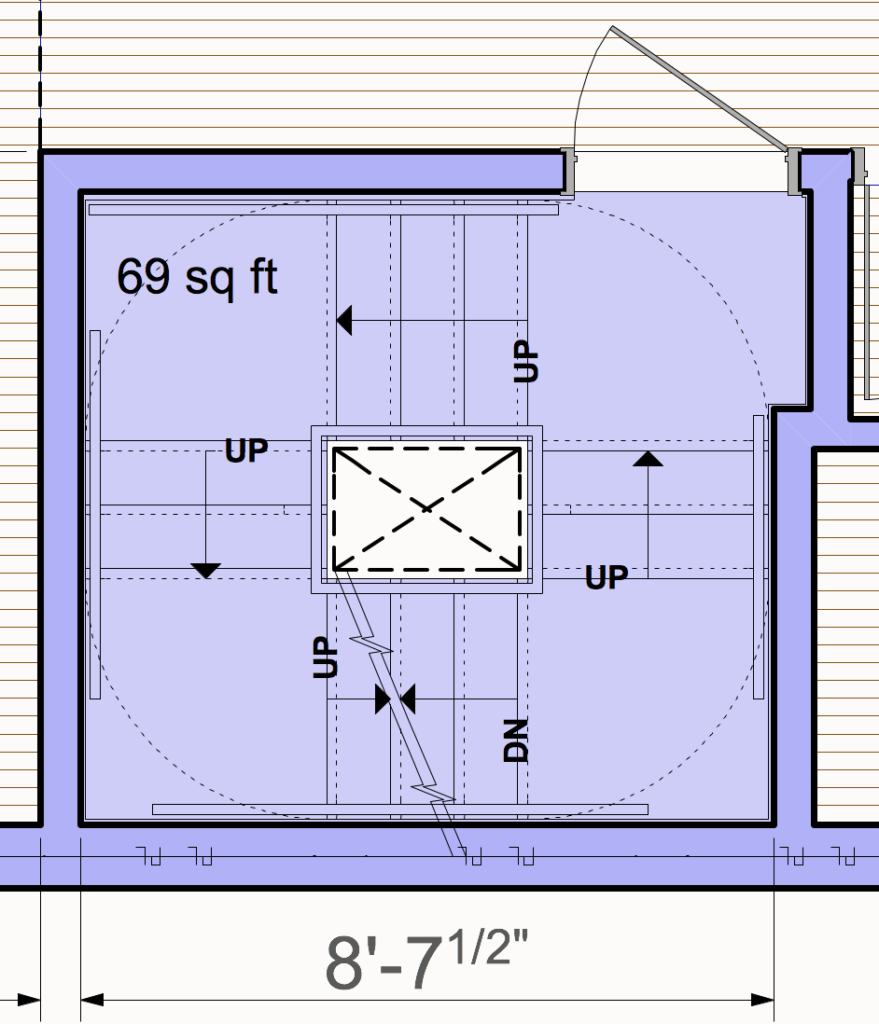
Thank you for providing this valuable resource! For a triplex over garden layout (or single family) in a 45 x 20, would you still recommend some version of this square stair solution, or does most of the value add accrue only in a 3 or 4 family setup?
Hi Dennis,
The smaller footprint of the square stair configuration is more suitable to Multiunit buildings where there is a desire to make living areas larger by making common circulation areas smaller. While it could work for a single family residence, especially if an industrial feel is desired, most homes opt for a configuration that connects with the living spaces, in terms of spatial relationships, and, style and detail.
How do you enter the other apartments? I do not see a common area
Hi Dustin,
Great question. This article is for one of the typical upper floors. The ground level floor plan is probably shown on another blog post. Being a townhouse, the entrance corridor would be located on the same side as the stair.